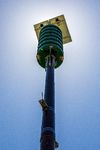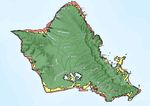2011 Hawaii Tsunami 10 Year Anniversary
←
→
Page content transcription
If your browser does not render page correctly, please read the page content below
DEPARTMENT OF DEFENSE
Hawai'i Emergency Management Agency
DAVID Y. IGE
GOVERNOR
MAJOR GENERAL KENNETH S. HARA
DIRECTOR OF EMERGENCY
MANAGEMENT
LUKE P. MEYERS
ADMINISTRATOR OF EMERGENCY MANAGEMENT
For Immediate Release
March 11, 2021
2011 Hawaii Tsunami 10 Year Anniversary
On March 11, 2011, at 14:46 Japan local time, a M9.0 earthquake occurred off the northeastern coast of
Honshu, Japan, that generated a devasting
tsunami. Total damage was estimated at USD $220
billion, making it the most expensive disaster in
history. It was the largest magnitude earthquake
ever in Japan and is the 4th largest in the world
since 1900. In many coastal towns, waves flooded
to at least the 3rd or 4th floor of buildings. 500,000
houses were completely or partial destroyed, and
about 500,000 people displaced. Over 18,000
persons lost their lives - nearly all from the
relentless tsunami waves.The earthquake generated a Pacific-wide tsunami, reaching the State of
Hawai’i, and causing extensive damage to private and public property in the
counties of Honolulu, Maui, and Hawaii. Over 200 waves were recorded in
varying heights. The counties sustained damage of approximately $7.5
million, equating to over $8.725 million today. President Obama declared
this a Major Disaster for the State of Hawaii on April 8th 2011.
Since this incident, the Hawai’i Emergency Management Agency (HI-EMA), in
coordination with our County partners, the University of Hawai’i system, the Federal Emergency
Management Agency (FEMA), and the United States Coast Guard (USCG) have taken major steps to
mitigate impacts to the state, enhance communications networks, improve awareness, and prepare for
whenever the next tsunami may occur.
Hawaii has become the first jurisdiction in the United States to implement tsunami evacuation maps for
emergency response operations. The 2011 Tohoku tsunami prompted the development of extreme
inundation scenarios beyond what can be inferred from historical records,
and county emergency management augmented the evacuation maps with a
second hazard zone delineated by modeled tsunamis from potential Mw 9.3
and 9.6 earthquakes. These can be located in the front pages of your local
telephone book, as well as on-line (https://dod.hawaii.gov/hiema/public-
resources/tsunami-evacuation-zone/).
Hawai’i has created the largest outdoor warning siren system in the United
States. 410 sirens are installed across the islands, with 76 state-of-the-art sirens
to be added, increasing coverage state-wide. The new, standardized, electronic
sirens are battery powered with a photovoltaic solar charging system and have
redundant cellular/satellite communications. Additionally, 73 existing legacy
sirens are to be upgraded.
A wide-ranging data compendium in support
of emergency management for the nine state
harbors has been developed to facilitate
delineation of offshore refuge areas, where vessels are evacuated to
during a tsunami warning. Of equal importance to the maritime
community is the occurrence of more frequent tsunami advisories,
when hazardous nearshore currents are expected. The “Hawai’i
Boater’s Hurricane and Tsunami Safety Manual” can be found on-line
(https://dlnr.hawaii.gov/dobor/files/2013/04/web-final_hurricaneboatersmanual_7-01-13.pdf).
The HI-EMA Public Assistance Branch facilitated over $6.4 million in federal dollars for repair projects
across the state resulting from the 2011 tsunami. In such time, all reparations have been completed and
3 projects remain to be approved and closed by FEMA.From the newly expanded Continuity of Operations location
nestled in Diamond Head Crater, seismic activity is constantly
monitored with the continuous vigilance of the State Warning
Point (SWP) Team.
Revised and updated Tsunami Response Checklists, for Local and
Distant Earthquake events that produce a tsunami, have been
developed and practiced. Emergency lines of communication
between SWP and the four counties’ early warning centers are routinely tested, and additional
communications systems have been installed in case the primary and secondary systems are ever
interrupted. Also, the agency has upgraded its FEMA authorized
software for use of the Intergraded Public Alert & Warning for
Emergency Alert System and Wireless Emergency Alerts (WEA)
notifications over TV, Cable, Radio, & WEA enabled/compatible
cellular devices. The agencies internal mass notification system for
situational awareness and staff recall was also upgraded.
The HI-EMA encourages every resident to take steps now to prepare for any emergency and protect
your ohana.
Pack a 14-day ‘Go-To-Kit’ for your family
• Change of clothes and sturdy shoes
• 1 gallon of water per person per day
• Non-perishable foods
• Masks, gloves, and sanitizer
• First aid kit
• Battery powered or crank powered radio
• Flashlight
• Batteries
• Manual can opener
• Hygiene supplies
• Whistle
• Important documents
Make a plan
• Plan escape routes – ensure all family members know where to go and how to get out• Meeting place – choose a physical location to meet
if communication between family members is down
• Family communication – identify a family member
who lives out-of-state who everyone can notify
when they are safe
After a strong or long earthquake, a tsunami may follow.
If you feel the ground shake
• Drop, cover and hold on
• Evacuate quickly on foot to high ground or far inland
• Wait for local officials to advise on cautionary re-entry
Sign up for Emergency Notifications
• Please visit https://dod.hawaii.gov/hiema/get-ready/ for links to each County website for free
text-based notifications for the latest updates on natural disasters and man-made emergencies
We cannot go back in time and change history, nor can we control the dynamics of our planet. Yet we
can and must learn from the past, prepare for whatever the future may bring, and work to limit tsunami
impacts to our state and people.
For more information please visit ready.hawaii.gov
###
Contact:
Douglas Carroll
Public Information Officer (TA)
douglas.m.carroll@hawaii.gov
808-285-1516
For the latest information from the Hawai‘i Emergency Management Agency (HIEMA) please go
to:
http://www.ready.hawaii.gov
Twitter: @Hawaii_EMA
Facebook: @HawaiiEMA
Instagram: Hawaii_EMA
YouTube: Hawaii Emergency Management Agency
Linkedin: Hawaii Emergency Management Agency
HawaiiEMA@hawaii.govYou can also read

























































